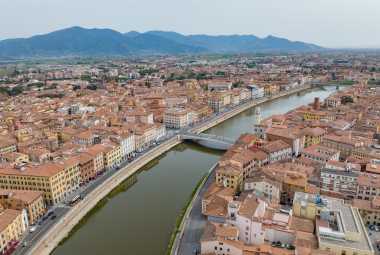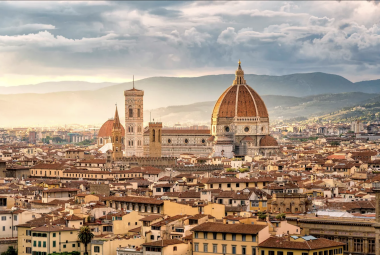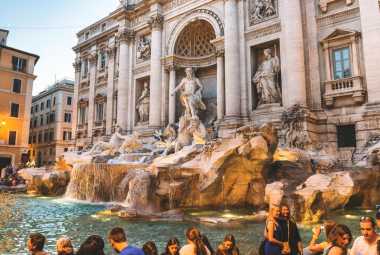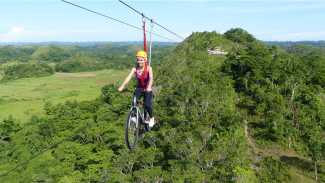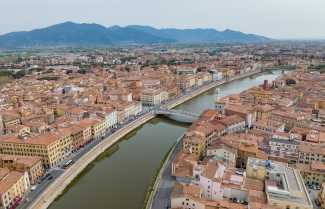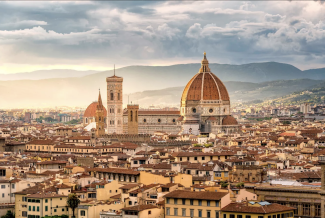Image by fearlessfemaletravels.com
*Vacation Mode is a for-profit site. It contains paid banner advertisements that are generated and managed by a third-party network. This site also includes relevant affiliate links (both in the content and on the sidebar) all of which we do our best to clearly mark as such.
Quick Summary
-
Best Times to Visit Italy:
- To avoid crowds: shoulder seasons (spring: March-May, autumn: September-November) and off-season (winter).
- For warm weather and more tourist activities: summer (June-August).
- Consider weather, tourist traffic, and seasonal attractions for a memorable experience.
-
Peak Tourist Seasons:
- Summer months (June-August) in Rome, Venice, and Florence are highly crowded.
- Pros: vibrant atmosphere, bustling piazzas, lively cafes.
- Cons: crowded attractions, long queues, higher accommodation prices.
-
Shoulder Seasons:
- Spring and autumn offer milder temperatures and fewer crowds.
- Pros: quieter travel experience, a chance to explore local culture and hidden gems.
- Cons: some seasonal attractions have limited availability and unpredictable weather.
-
Off-Seasons:
- Winter months offer a tranquil experience with fewer tourists.
- Pros: peaceful locations, opportunity to explore hidden gems, more intimate connection with Italian culture.
- Cons: limited access to tourist facilities, reduced transportation options, and potential closure of seasonal attractions.
-
Pros and Cons of Visiting During Peak Season:
- Pros: experience iconic sights, vibrant atmosphere, and structured itineraries.
- Cons: overcrowded attractions, long queues, higher prices for accommodations and attractions.
-
Pros and Cons of Visiting During Shoulder Seasons:
- Pros: tranquil setting, serene and immersive experience, exploration of authentic locations.
- Cons: limited access to certain attractions, reduced operating hours, and less vibrant ambiance in some places.
-
Pros and Cons of Visiting During Off-Seasons:
- Pros: discover tranquil spots, experience peaceful and authentic travel, easier access to popular attractions.
- Cons: limited tourist facilities, reduced transportation options, closure of seasonal attractions.
-
Best Months to Visit Without Crowds:
- Shoulder seasons (April-June, September-October) for pleasant weather, fewer crowds, and cultural events.
-
Top Tourist Destinations During Less Crowded Months:
- Amalfi Coast, Cinque Terre, and Tuscany offer serene experiences with beautiful landscapes and cultural exploration.
-
Weather Conditions During Shoulder Seasons:
- Mild temperatures, and clear skies, are ideal for outdoor activities and exploring historical landmarks.
-
Tips for Avoiding Crowds During Peak Season:
- Explore lesser-known spots, visit popular attractions early morning, and engage in offbeat experiences.
Are you dreaming of exploring the beauty of Italy without being surrounded by crowds of tourists? In this article, we will guide you through the best times to visit Italy, whether you prefer to avoid peak tourist seasons, embrace the charm of shoulder seasons, or enjoy the tranquility of off-seasons.
We will discuss the pros and cons of each season, highlight the top tourist destinations during less crowded months, and provide valuable tips for avoiding crowds during peak tourist season. Get ready to plan your Italian adventure with ease!
When is the Best Time to Visit Italy?
Determining the best time to visit Italy involves considering various factors such as weather, tourist traffic, and seasonal attractions, ensuring a memorable travel experience.
Weather plays a crucial role in deciding the ideal time to explore Italy. The summer months of June to August attract a significant number of tourists due to the warm and sunny weather, making popular destinations crowded and accommodation prices higher.
On the other hand, spring (March to May) and autumn (September to November) offer milder temperatures, making it a pleasant time to visit with fewer crowds. The timing of seasonal events and festivals like Carnival in Venice or the Opera season in Verona can greatly enhance your Italian experience.
What Are the Peak Tourist Seasons in Italy?

Italy experiences peak tourist seasons during the summer months, particularly in popular destinations like Rome, Venice, and Florence, attracting a significant influx of visitors seeking iconic landmarks and cultural experiences.
The vibrant vacation atmosphere in these cities during peak seasons is simply unmatched, with bustling piazzas, lively cafes, and a sense of celebration in the air. The high tourist traffic can lead to long queues at famous tourist attractions, making it essential to plan visits strategically. Despite the crowds, experiencing Italy during this period offers a unique opportunity to immerse oneself in the rich history and beauty of the country, creating lasting memories and a true sense of adventure.
What Are the Shoulder Seasons in Italy?
Italy's shoulder seasons, typically in spring and autumn, offer a quieter and more serene travel experience, allowing visitors to immerse themselves in the local culture, explore hidden gems, and enjoy a peaceful ambiance away from the crowds.
During these off-peak periods, the charming Italian countryside beckons with its picturesque vineyards, olive groves, and medieval villages waiting to be discovered. Travelers can savor leisurely meals at family-run trattorias, sample regional wines in quaint enotecas, and engage in authentic conversations with friendly locals eager to share their traditions. The tranquil ambiance of these shoulder seasons creates a perfect setting for intimate moments exploring historic sites, meandering through cobblestone streets, and revelling in the simple pleasures of daily Italian life.
What Are the Off-Seasons in Italy?
Italy's off-season, typically during winter, provides tranquil and peaceful locations for travelers seeking serene destinations and uncrowded places to experience the country's beauty at a leisurely pace.
During this quieter period, visitors have the opportunity to explore hidden gems and lesser-known attractions that are often overshadowed during the peak tourist season.
Imagine wandering through historic cobblestone streets without the hustle and bustle of crowds, savoring authentic local cuisine in charming, family-run eateries, and admiring breathtaking landscapes without obstruction.
The serene atmosphere allows for a more intimate connection with Italy's rich culture and heritage, inviting travelers to slow down and appreciate the beauty of each moment.
What Are the Pros and Cons of Visiting Italy During Peak Tourist Season?
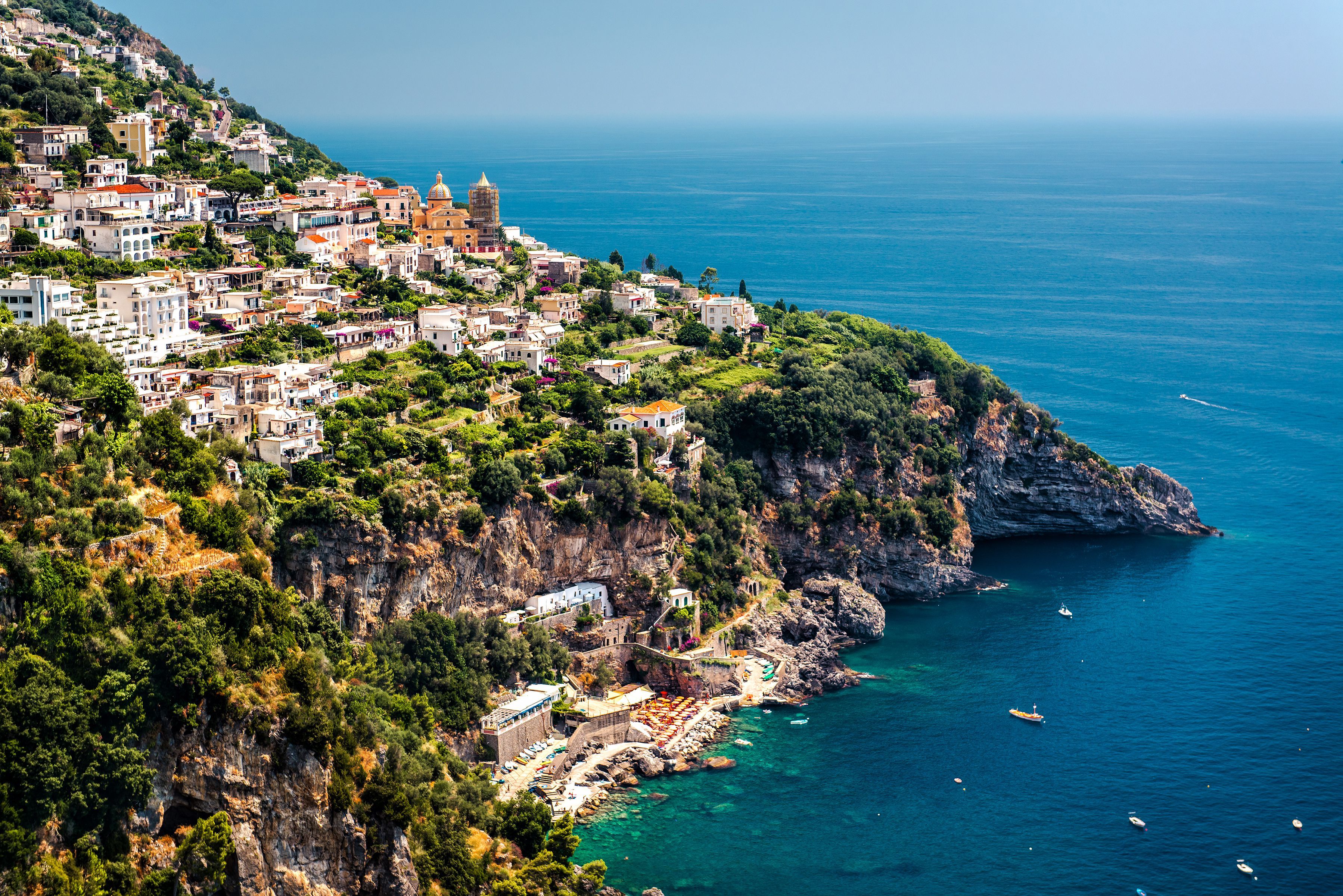
Visiting Italy during the peak tourist season provides an opportunity to witness bustling attractions and vibrant city life but requires meticulous planning, advanced bookings, and patience to navigate crowded sights and popular destinations.
Exploring popular cities like Rome, Florence, and Venice during peak season offers a chance to experience the heartbeat of Italian culture in full swing. The colourful festivals, lively street performances, and endless culinary delights create a vibrant tapestry of experiences.
The sheer volume of tourists can result in long lines at major landmarks, crowded restaurants, and higher accommodation prices. To make the most of your trip, consider pre-booking skip-the-line tickets, opting for early morning visits to iconic sites, and straying off the beaten path to discover hidden gems away from the tourist hordes.
Pros:
Traveling to Italy during the peak tourist season allows visitors to explore iconic sights, immerse in the vibrant atmosphere of popular destinations, and follow meticulously planned itineraries to maximize their travel experience.
This time of year offers travelers a unique opportunity to witness historical landmarks, such as the Colosseum in Rome or the stunning canals of Venice, in all their bustling glory. The energy and excitement in cities like Florence or Milan during peak season are unparalleled, providing a truly immersive cultural experience.
Structured travel itineraries tailored for peak season visitors ensure that travelers can make the most of their time, providing access to renowned attractions and insider tips for an unforgettable Italian adventure.
Cons:
The downside of visiting Italy during the peak tourist season includes dealing with overcrowded attractions, long queues at popular tourist hotspots, and managing the increased tourist traffic, requiring patience and strategic travel advice to navigate the bustling crowds.
When traveling through Italy's iconic cities like Rome, Venice, and Florence during peak season, tourists often find themselves engulfed in a sea of people at renowned landmarks such as the Colosseum, St. Mark's Square, and the Uffizi Gallery. To avoid feeling overwhelmed by the crowds, it's advisable to plan your visits during off-peak hours or opt for guided tours that offer skip-the-line access. Exploring lesser-known gems and local neighborhoods can provide a more authentic experience away from the tourist throngs.
What Are the Pros and Cons of Visiting Italy During Shoulder Seasons?
Exploring Italy during the shoulder seasons offers a leisurely travel experience with quieter atmospheres, hidden gems waiting to be discovered, and a relaxed ambiance that allows visitors to savor the authentic charm of the country away from the peak crowds.
During these off-peak times, travelers can appreciate Italy's serene locations such as the picturesque countryside, where rolling vineyards and historic villages beckon exploration. The cultural ambiance in cities like Florence and Rome takes on a more intimate feel, with locals going about their daily lives and museums and landmarks more accessible for leisurely visits. It's important to note that some seasonal attractions or services may have limited availability, and weather conditions can be more unpredictable during shoulder seasons.
Pros:
Visiting Italy during the shoulder seasons offers travelers the chance to explore charming and authentic locations in a tranquil setting, away from the tourist crowds, allowing for a serene and immersive experience that captures the true essence of the country.
Imagine strolling through cobblestone streets lined with quaint cafes and artisan shops, where you can savor a cappuccino while soaking up the local culture without feeling rushed.
Picture yourself admiring centuries-old architecture under the soft Mediterranean sun, with ample space to take in the beauty at your own pace.
Whether wandering through vineyard-covered hills in Tuscany or unwinding on the peaceful beaches of the Amalfi Coast, Italy's shoulder seasons beckon with a sense of tranquility and charm that is simply captivating.
Cons:
Despite the tranquil atmosphere, visiting Italy during shoulder seasons may limit access to certain attractions due to reduced operating hours, and some locations may lack the vibrant ambiance found during peak seasons, requiring travelers to explore alternative sites to maintain a fulfilling travel experience.
The quieter periods can result in less crowded but quieter spots, which may appeal to those seeking a more relaxed environment but could leave others yearning for the lively hustle and bustle typically associated with Italy.
Travelers may need to put in extra effort to seek out alternative venues, local festivals, or hidden gems to truly immerse themselves in the desired ambiance and vibrancy of the Italian culture during these off-peak times.
What Are the Pros and Cons of Visiting Italy During Off-Seasons?
Off-peak travel to Italy during the winter months offers the chance to discover hidden spots, enjoy uncrowded attractions, and immerse in the peaceful atmosphere of lesser-known locations that provide a unique and serene travel experience away from the tourist hotspots.
Exploring Italy during the off-season allows visitors to truly connect with the authentic soul of the country, as they witness the local life unfolding without the hustle and bustle of peak tourist seasons. This quieter period offers a more intimate experience, giving travelers the opportunity to engage with the culture, interact with locals, and savor the genuine flavors of Italian cuisine in a more relaxed setting. The reduced crowds make it easier to appreciate the stunning architecture, art, and natural beauty of Italy's less-explored regions, unveiling a different perspective on this beloved destination.
Pros:
Exploring Italy during the off-season presents the opportunity to discover hidden and tranquil spots, delve into serene destinations off the beaten path, and experience the country's beauty in a peaceful setting devoid of tourist crowds, allowing for a truly immersive and authentic travel experience.
Away from the hustle and bustle of peak tourist seasons, off-peak travel in Italy unveils a different side of the country, inviting you to explore picturesque villages, secluded beaches, and charming countryside landscapes.
The slower pace allows for a deeper connection with the local culture, cuisine, and traditions, offering a more intimate glimpse into everyday Italian life. This quieter period also means easier access to popular attractions, giving you the freedom to savor each moment without the rush or overcrowding often experienced during peak seasons.
Cons:
The downside of visiting Italy during off-seasons includes limited access to certain tourist facilities, reduced transportation options to remote areas, and the potential closure of seasonal attractions, requiring travelers to plan meticulously and be prepared for a quieter, off-peak travel experience.
During these times, travelers may encounter challenges such as shortened museum hours, fewer restaurant choices, and reduced frequency of public transportation services in rural regions. It's essential to research in advance, checking the operational hours of key attractions, booking accommodations that remain open year-round, and considering the necessity of renting a car for more flexibility in exploring remote areas.
While off-peak travel in Italy can offer a unique and serene experience, being well-prepared is key to enjoying the beauty of the country minus the crowds.
What Are the Best Months to Visit Italy Without Crowds?
The best months to visit Italy without crowds typically fall in the shoulder seasons of spring and autumn, offering travelers the chance to explore serene locations, follow personalized itineraries, and savor the peaceful ambiance of less crowded destinations for a tranquil and authentic Italian experience.
During these periods, from April to June or September to October, visitors can enjoy pleasant weather, blooming landscapes, and cultural events without the overwhelming influx of tourists.
To enhance your travel experience, consider booking accommodations in smaller towns or countryside retreats rather than major cities. Embracing local cuisine and participating in off-the-beaten-path activities can provide a deeper connection to the Italian way of life.
By venturing off the traditional tourist pathways, travelers can uncover hidden gems and cherish moments of tranquility in picturesque villages and idyllic countryside settings.
What Are the Top Tourist Destinations in Italy During These Months?
During the quieter months in Italy, travelers can explore serene locations like the Amalfi Coast, Cinque Terre, and Tuscany, discovering hidden gems, experiencing charming ambiance, and immersing in the unique atmosphere of these less crowded but enchanting destinations.
- The Amalfi Coast, with its dramatic cliffs and pastel-colored villages perched above the sparkling Mediterranean Sea, offers a peaceful escape from the bustling crowds.
- Cinque Terre's colorful fishing villages connected by scenic hiking trails provide a tranquil setting for leisurely walks and breathtaking views.
- In Tuscany, vineyard-covered hills, medieval towns, and rustic countryside villas transport visitors to a slower pace of life ideal for relaxation and cultural exploration.
These off-peak months allow travelers to savor the beauty and authenticity of these regions without the summer crowds, creating unforgettable and serene experiences.
What Are the Weather Conditions During These Months in Italy?
The weather in Italy during the shoulder seasons of spring and autumn offers mild temperatures, clear skies, and pleasant conditions ideal for outdoor exploration and leisurely activities in tranquil spots that provide a serene backdrop for travel experiences. During these recommended months, visitors can expect temperatures that are neither too hot nor too cold, making it perfect for strolling through picturesque towns, vineyards, or olive groves. The clear skies provide a stunning backdrop for sightseeing and exploring historical landmarks while taking in the beauty of Italy's landscapes. The pleasant climate creates an inviting atmosphere for al fresco dining at charming cafes or enjoying a leisurely gondola ride in Venice's iconic canals. These ideal conditions beckon travelers to immerse themselves in the local culture and savor the relaxed pace of life that defines Italy during its shoulder seasons.
What Are Some Tips for Avoiding Crowds During Peak Tourist Season in Italy?
To avoid crowds during the peak tourist season in Italy, travelers can explore lesser-known spots, opt for early morning visits to popular attractions, and prioritize off-the-beaten-path experiences to enjoy serene locations away from the bustling tourist traffic.
By venturing off the typical tourist trails, travelers have the chance to discover hidden gems that offer a more authentic and tranquil Italian experience.
Planning early morning excursions allow visitors the opportunity to soak in iconic landmarks without the swarms of tourists.
Engaging in offbeat experiences, such as exploring local markets or quaint villages, can lead to unforgettable encounters and a deeper connection with Italy's rich culture.
By embracing these strategies, travelers can savor the magic of Italy in a peaceful and intimate setting.
Frequently Asked Questions
What is the best time to visit Italy without crowds?
The best time to visit Italy without crowds is between September and October, or between April and May. These months fall right in between the peak tourist season, offering pleasant weather and fewer crowds.
Are there any specific regions in Italy that are less crowded during certain times of the year?
Yes, Southern Italy and the countryside are generally less crowded compared to popular cities like Rome, Venice, and Florence. They also tend to have a more relaxed pace and offer a more authentic Italian experience.
What is the weather like during the best time to visit Italy without crowds?
The weather during the best time to visit Italy without crowds is generally mild and pleasant, with temperatures hovering around the mid-70s Fahrenheit. However, it is always a good idea to check the forecast for the specific region you plan on visiting.
Is it still possible to visit popular attractions during the best time to visit Italy without crowds?
Yes, it is still possible to visit popular attractions during the best time to visit Italy without crowds. However, it is recommended to book tickets in advance and avoid weekends and peak tourist hours to avoid large crowds.
Are there any major events or festivals that happen during the best time to visit Italy without crowds?
Yes, there are several major events and festivals that happen during the best time to visit Italy without crowds. These include the Venice Biennale in September, the olive harvest in October, and the International Wine and Food Festival in May.
Is it cheaper to visit Italy during the best time to visit without crowds?
Generally, yes, it is cheaper to visit Italy during the best time to visit without crowds. Flights and accommodations tend to be more affordable, and there are often deals and discounts available for popular attractions and activities. However, prices may vary depending on the specific region and time of year.





